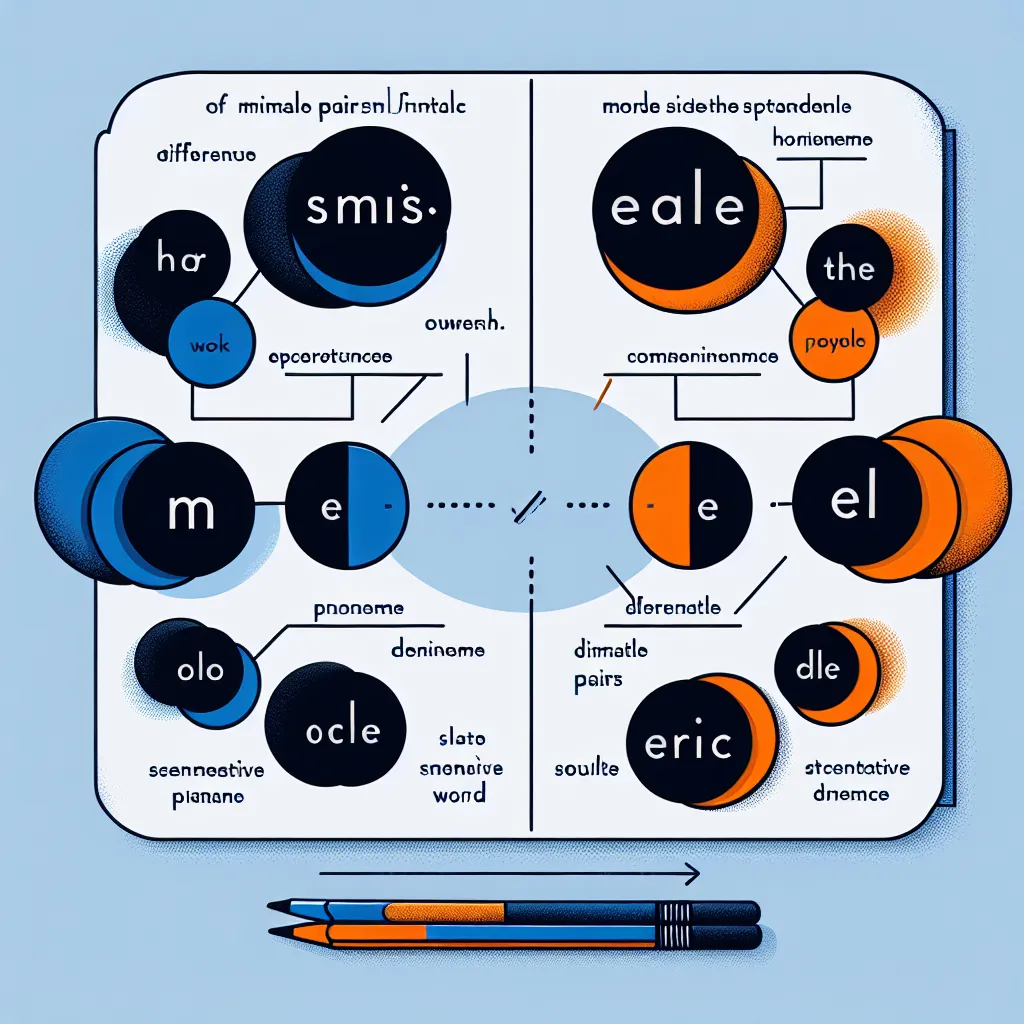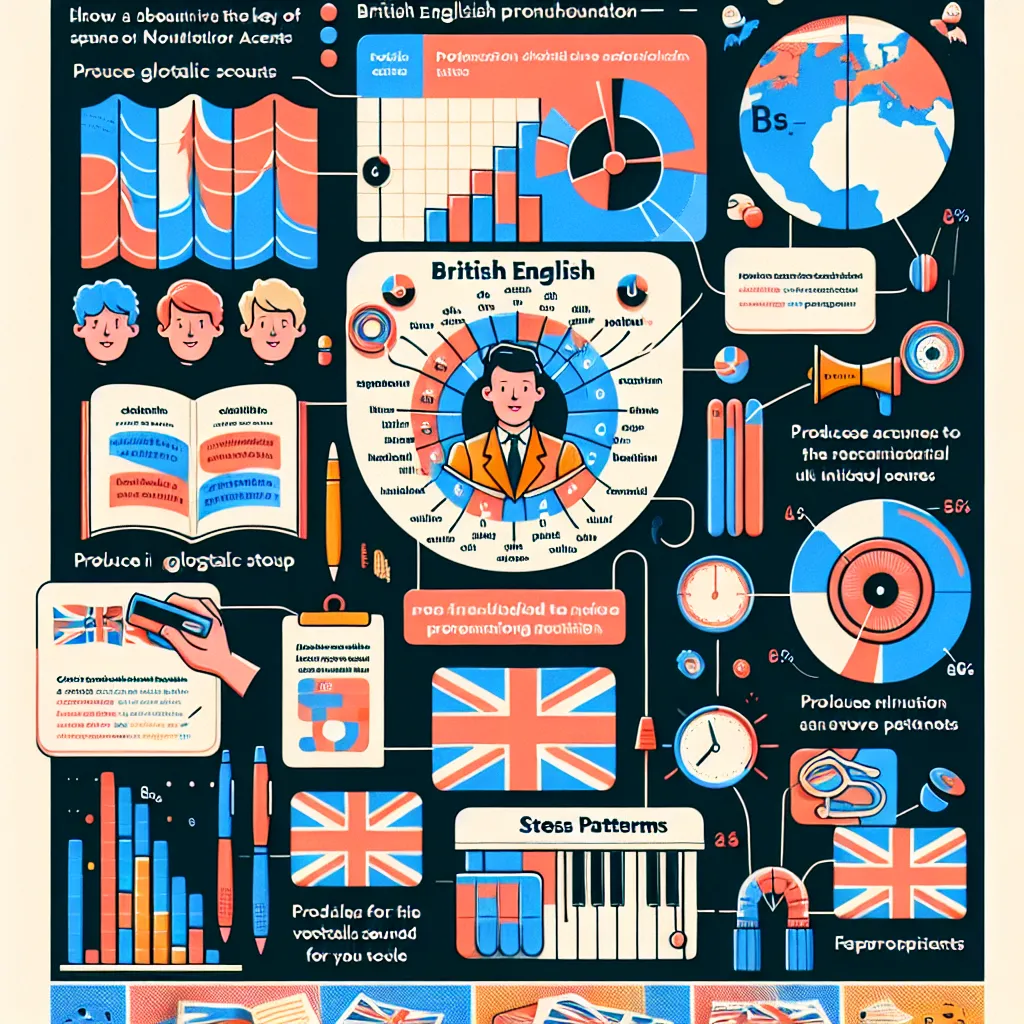Learning to pronounce English words correctly is a crucial aspect of language acquisition. One effective method to improve your pronunciation skills is by using minimal pairs. In this comprehensive guide, we’ll explore How To Master English Pronunciation Using Minimal Pairs, providing you with practical tips and examples to enhance your speaking abilities.
What Are Minimal Pairs?
Minimal pairs are pairs of words that differ in only one sound, typically in one phoneme. These pairs are invaluable tools for learners to distinguish between similar sounds in English and refine their pronunciation skills.
 English Minimal Pairs Concept
English Minimal Pairs Concept
Examples of Minimal Pairs
Here are some common examples of minimal pairs in English:
- ship / sheep
- cat / cut
- pin / bin
- run / fun
- light / right
By practicing these pairs, learners can train their ears to hear the subtle differences between sounds and improve their ability to produce them accurately.
Why Are Minimal Pairs Important for Pronunciation?
Minimal pairs are essential for several reasons:
- Sound Discrimination: They help learners distinguish between similar sounds that may not exist in their native language.
- Pronunciation Practice: By focusing on the specific sound difference, learners can practice producing the correct sound more effectively.
- Accent Reduction: Regular practice with minimal pairs can help reduce a foreign accent and improve overall pronunciation.
- Listening Skills: Working with minimal pairs enhances listening comprehension, making it easier to understand native speakers.
How to Use Minimal Pairs for Pronunciation Practice
To effectively use minimal pairs in your pronunciation practice, follow these steps:
1. Identify Problematic Sounds
Start by identifying the sounds that are difficult for you. This often depends on your native language. For example, many learners struggle with the /θ/ (th) sound in words like “think” or “three.”
2. Find Relevant Minimal Pairs
Once you’ve identified the challenging sounds, find minimal pairs that focus on those specific phonemes. For instance, if you’re working on the /θ/ sound, you might use pairs like:
- think / sink
- three / free
- thumb / sum
3. Listen and Repeat
Listen to native speakers pronouncing the pairs and repeat after them. Pay close attention to the subtle differences in sound. You can find audio resources online or use pronunciation apps that feature minimal pair exercises.
4. Record Yourself
Record yourself pronouncing the minimal pairs and compare your pronunciation to that of native speakers. This self-assessment can help you identify areas for improvement.
5. Practice Regularly
Consistency is key when it comes to improving pronunciation. Set aside time each day to practice with minimal pairs.
 Minimal Pairs Practice Session
Minimal Pairs Practice Session
Advanced Techniques for Mastering Pronunciation with Minimal Pairs
As you become more comfortable with basic minimal pair exercises, you can try these advanced techniques:
1. Contextual Practice
Use minimal pairs in sentences to practice pronunciation in context. For example:
- “I need to think about sinking the ship.”
- “Is that a sheep or a ship in the distance?”
2. Tongue Twisters
Create tongue twisters using minimal pairs to challenge yourself further. For instance:
- “The thin thief thought thoroughly about throwing thirty thimbles.”
3. Minimal Pair Games
Engage in games or activities that use minimal pairs. For example, play a memory game where you match cards with minimal pair words, pronouncing each word as you flip the card.
4. Shadowing Technique
Use the shadowing technique with minimal pairs. Listen to a native speaker and repeat the words or sentences immediately after them, mimicking their pronunciation as closely as possible.
Common Pronunciation Errors and How to Correct Them
When working with minimal pairs, be aware of these common pronunciation errors:
-
Vowel Length: Many learners struggle with long and short vowel sounds. Practice pairs like “ship/sheep” or “full/fool” to improve this aspect.
-
Consonant Voicing: Pairs like “pin/bin” or “fan/van” can help you distinguish between voiced and voiceless consonants.
-
Th-sound Confusion: The /θ/ and /ð/ sounds are often challenging. Use pairs like “think/sink” or “they/day” to practice.
-
L and R Distinction: For many Asian language speakers, differentiating between /l/ and /r/ can be difficult. Practice with pairs like “light/right” or “lane/rain.”
-
Silent Letters: English has many silent letters that can cause pronunciation errors. Use pairs like “knife/nice” or “write/right” to practice.
To correct these errors, focus on the specific sound differences, exaggerate the movements of your mouth and tongue, and practice regularly with feedback from native speakers or language learning apps.
Phonemic Chart and Commonly Mispronounced Words
Understanding the International Phonetic Alphabet (IPA) and using a phonemic chart can greatly enhance your pronunciation skills. Here’s a list of 10 commonly mispronounced words related to minimal pairs, along with their correct pronunciations:
- Clothes /kləʊðz/ (not /kləʊz/)
- Thoroughly /ˈθʌrəli/ (not /ˈθɔːrəli/)
- Sixth /sɪksθ/ (not /sɪks/)
- Months /mʌnθs/ (not /mʌns/)
- Recipe /ˈresəpi/ (not /reˈsaɪp/)
- Vegetable /ˈvedʒtəbl/ (not /ˈvedʒətəbl/)
- Comfortable /ˈkʌmftəbl/ (not /ˈkʌmfətəbl/)
- Cupboard /ˈkʌbəd/ (not /ˈkʌpbɔːd/)
- Sword /sɔːd/ (not /swɔːd/)
- Colonel /ˈkɜːnl/ (not /ˈkələnl/)
Practice these words alongside their minimal pairs to improve your overall pronunciation.
Conclusion
Mastering English pronunciation using minimal pairs is an effective and systematic approach to improving your speaking skills. By focusing on specific sound differences, you can train your ear and mouth to produce more accurate English sounds. Remember to practice regularly, use a variety of techniques, and don’t be afraid to make mistakes – they’re a natural part of the learning process.
For more tips on improving your English pronunciation, check out our articles on how to improve pronunciation through real-world practice and pronunciation tips for non-native English speakers.
We encourage you to share your experiences with minimal pairs in the comments below. What techniques have you found most helpful in your pronunciation journey?




